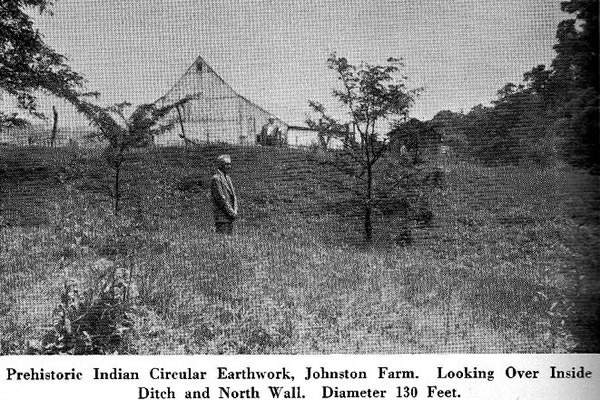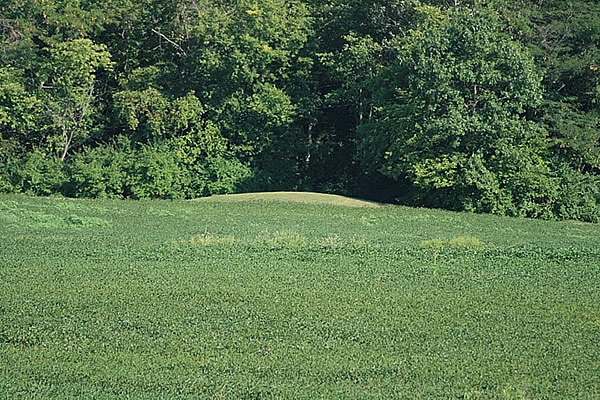
Johnston Farm & Indian Agency
Native American, Frontier, and Canal History
Accredited by the American Association of Museums, Washington D.C.

Approximately 3,000 years ago, an entirely new way of life had begun to develop that is known as Adena. This culture made many advances over their ancestors’ ways of life. People began to live in small hamlets of 15-20 individuals.

Their homes were built from wood, and could protect them from the weather very well. Artistic skills began to be more highly developed, and pottery was manufactured in quantities large enough for everyday life. The people began to build mounds and earthworks, like this one for ceremonial reasons. Perhaps the most important thing the Adena did was to begin planting seeds and raising gardens to increase their food supplies.

The Adena mound and earth work found on the Johnston Farm was preserved for the future by John Johnston's care and compassion, and can still be seen today.
"On the road from Piqua to this stone wall we passed a very large mound, which had been partially cut down in order to make room for the road. This mound has, as we believe, never been opened.
In this vicinity and near the bank of the river is the residence of Colonel John Johnston, the Indian agent, a man whom we judge to be of estimable feelings as, unlike most of the settlers in this new country, he has respected the remains of these Indian works, and has not suffered the ploughshare to pass through them."
J. C. Smiley